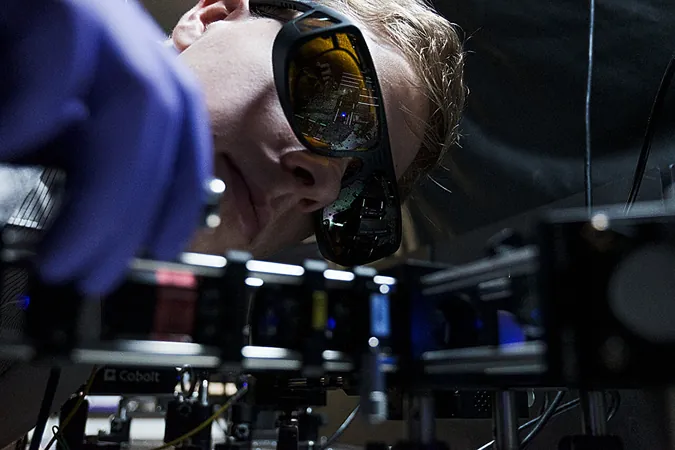
Revolutionary Quantum Computing Breakthrough Shrinks Components by 1,000 Times!
2024-10-14
Author: Sarah
Revolutionary Quantum Computing Breakthrough Shrinks Components by 1,000 Times!
In an astonishing leap for quantum computing, researchers from Nanyang Technological University (NTU) in Singapore have unveiled a groundbreaking discovery that could shrink critical components by an incredible 1,000 times! This remarkable advancement promises to make quantum computers more compact and efficient, paving the way for innovative applications in various fields. The research findings are detailed in the latest issue of Nature Photonics.
Currently, a specific class of quantum computers utilizes light particles known as photons, which can be generated in pairs that are “entangled” in a unique quantum state. Traditionally, the production of these photons involves using bulky laser setups on thick crystals, making it challenging to integrate them into compact computer chips. However, NTU scientists have found a game-changing solution—by employing materials that are only 1.2 micrometers thick, or about 80 times thinner than a human hair, they can produce entangled photon pairs with far fewer resources and less complexity.
"By developing a novel method for generating entangled photon pairs, we are setting the stage for radically smaller quantum optical systems, critical for advancements in quantum information processing and photonic computing," stated Prof. Gao Weibo, who spearheaded the study. This miniaturization could revolutionize how quantum devices operate, eliminating the need for cumbersome optical gear and allowing for easier integration into next-gen technology.
The Quantum Leap: Efficiency and Versatility
Quantum computers hold the promise of transforming our approach to numerous global challenges—from tackling climate change to accelerating drug discovery—by performing intricate computations that would take classical supercomputers millennia to accomplish, all within mere minutes. This astonishing capability arises from quantum computers' use of quantum bits, or qubits, which are capable of existing in multiple states at once, thereby enabling simultaneous calculations.
Photons serve as an ideal basis for qubits due to their ability to be produced and entangled at room temperature, which significantly reduces costs compared to other particles like electrons that necessitate extreme cooling. However, scaling down materials while still achieving efficient photon production has posed significant challenges, with thinner materials typically generating photons at unviably low rates.
NTU researchers explored a promising crystalline material known as niobium oxide dichloride, which exhibits remarkable optical properties, allowing for efficient photon pair production. Using a creative approach inspired by an earlier technique utilizing thicker crystals, the team combined two ultra-thin flakes of niobium oxide dichloride in a configuration that maintains synchronization without the need for additional optical equipment.
Expert Insights and Future Prospects
Prof. Sun Zhipei from Finland’s Aalto University, a leading expert in photonics, praised the NTU team’s work, describing entangled photons as “synchronized clocks” that maintain coherence regardless of distance, opening doors to instantaneous communication. He emphasized that this research represents a significant step towards the miniaturization and integration of quantum technologies.
Looking ahead, the NTU team aims to further enhance their technology by optimizing their setup to generate even more linked photon pairs. Future experiments may involve introducing micro-patterns on the surfaces of niobium oxide dichloride to boost yield, as well as exploring the stacking of different materials to maximize efficiency.
As this incredible research evolves, one thing is certain: the dawn of a quantum computing revolution is upon us, and it promises to reshape industries and our understanding of the universe itself. Stay tuned as we follow this promising frontier!

 Brasil (PT)
Brasil (PT)
 Canada (EN)
Canada (EN)
 Chile (ES)
Chile (ES)
 España (ES)
España (ES)
 France (FR)
France (FR)
 Hong Kong (EN)
Hong Kong (EN)
 Italia (IT)
Italia (IT)
 日本 (JA)
日本 (JA)
 Magyarország (HU)
Magyarország (HU)
 Norge (NO)
Norge (NO)
 Polska (PL)
Polska (PL)
 Schweiz (DE)
Schweiz (DE)
 Singapore (EN)
Singapore (EN)
 Sverige (SV)
Sverige (SV)
 Suomi (FI)
Suomi (FI)
 Türkiye (TR)
Türkiye (TR)